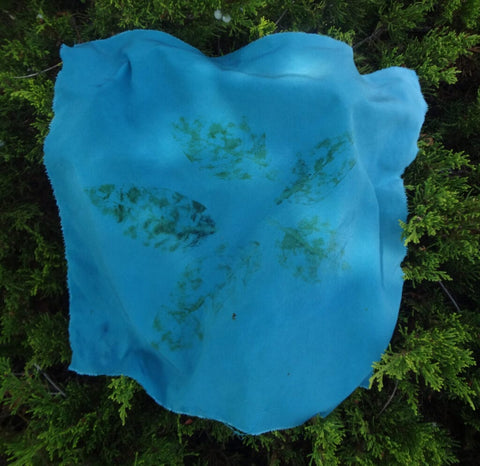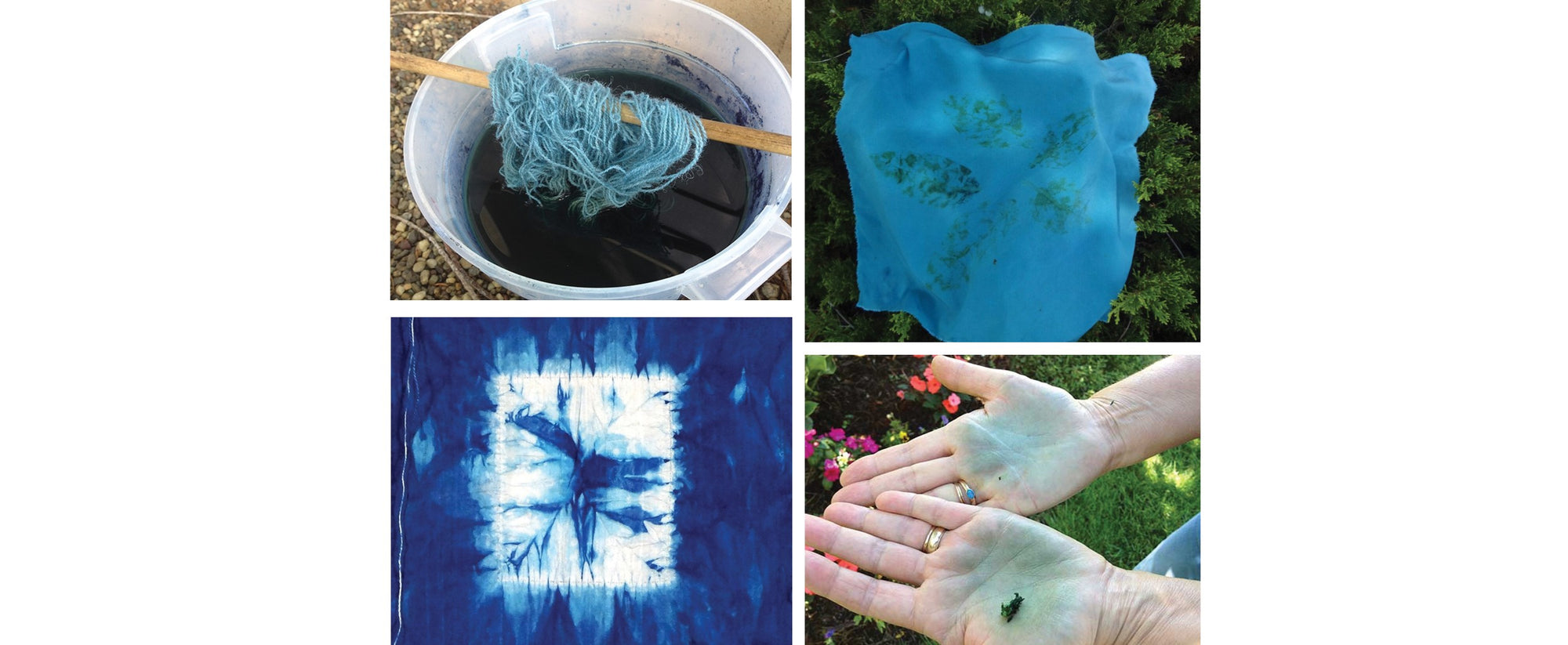By Judy Newland
Indigo is a dye deeply embedded in cultures around the world. Indigo dyeing is both art and science and touches multiple disciplines, such as botany, chemistry, medicine, economics, politics, and fashion. We also can't ignore the history of indigo, because textiles reveal so much about cultural and social history. It has been recognized as the "king of dye" for millennia, though today we're most familiar with it as the coloring for blue jeans. The use of the plant's blue dye for adornment, religious ritual, and as a symbol of political and social status occurred independently in cultures around the world.

Ancient Chirabaya fragment from Peru dyed with indigo
Natural indigo has been used continuously for thousands of years. It is mentioned in the histories of Herodotus around 450 BC, was a staple on early trade routes, and became a commercial force around 1500. The oldest known sample of indigo dyed fabric was identified in 2016 in Peru by researchers studying artifacts from earlier excavations. This 6,200-year-old blue fabric predates the ancient fabrics found in Egypt and the Middle East. Many cultures guarded their indigo secrets, which were layered with significance and symbolism. One can see why indigo is valued as an exceptional universal dye.

6,200 year-old fragment with indigo from Peru
Photo credit: Lauren Urana
The science contained in the indigo plant and in the dye pot is fascinating. Thousands of species of indigo grow all over the world. Most indigo-bearing plants thrive in tropical climates, with the exception of woad (Isatis tinctoria) used in Europe and England, and the frost-sensitive annual Japanese indigo (Polygonum tinctorium/Persicaria tinctoria). I grew a lovely crop of Japanese indigo in the high desert of Colorado and on a beautiful plot in coastal Washington. Organic chemists continue to study the unusual chemical structure of the plant, which bends or breaks some typical rules for dyeing. Why does indigo create fabrics that emerge yellow-green from the dye pot and then turn blue? And why is darker color achieved with more dips in the dye bath, rather than increasing the amount of dye? Indigo dyes both cellulose and protein fibers without needing a mordant—it's magical indeed.

Judy's indigo growing in Colorado

Wool yarn in the indigo bucket after one dip
Multiple dye techniques and processes can be used with indigo, depending on its form. Some cultures form the indigo into balls, some into composted chunks, chips or fine powders. Indigo is available in so many forms, including freeze-dried crystals; they're all waiting to be part of your next experiment. You might want to start exploring with fresh leaf indigo, as shown here. Using plants from my garden, I removed the leaves from stems and added them to a blender half full of very cold water. I blended them for a minute, strained the mixture into a small bucket, then immersed wet silk fabric into the bath for 3 to 5 minutes, moving it through the indigo the entire time. The sample was exposed to the air and then rinsed in cool water and laid out to dry. You can see the result is a wonderful aqua.

Silk dyed with fresh leaf indigo
There is so much to learn about the cultural history of indigo. How in the world did ancient artisans discover this unusual dye and figure out how to use it? No one knows for sure, but leaves crushed on the ground may have come into contact with urine or ash from a fire and produced the telltale blue. The rich cultural tradition of indigo around the world often reflects unique methods, beliefs, and values surrounding color and pattern. Many cultures describe the origins of indigo in myths and stories. Often, ceremony surrounds the dyeing process with social significance that reveals indigo dyeing as much more than technique. It is an art form that has captured the imagination of the world. You could travel the world seeking the magical transformation that happens to cloth and self. Or you could explore in the backyard, following the continuous thread that extends back in time and links us all through cloth; cloth that carries history, memories and stories to share.

Roll an indigo leaf to create blue hands
One of my favorite indigo stories comes from El Salvador. There I met Grace Guirola and heard her personal story, one that spans generations. Indigo production was part of her family heritage, but the family fled to the safety of the United States during the civil war in El Salvador during the 1980s. Many years later, she was able to buy back some of her family’s land, return to her beloved landscape, and begin a long journey of restoring her ancestral home and building a life based on indigo.

Grace in the indigo dye processing shed in El Salvador
We walked the ground where she had planted two varieties of indigo, shared stories over a meal and delightfully dyed yarn in her indigo vats after dark. It was a memorable experience that resulted in a small treasure trove of dyed items to carry home. But this indigo had penetrated more than cloth—it had created a memory to carry, one more woven story in my mind to share.
Resources
For a quick start without extensive reading, watch Blue Alchemy: Stories of Indigo, a 2011 documentary by Mary Lance.
Prideaux, Vivien. A Handbook of Indigo Dyeing. Search Press, 2003.
This is one of my favorite technique books and can get you started on your indigo explorations with confidence.
Balfour-Paul, Jenny. Indigo. Archetype Press, 1998.
This is the best reference book one can own. She covers the world of indigo and culture in a captivating way. Serious dyers should have this on their shelf.

Judy often dyes her hair with indigo or woad!
Judy Newland served as Director of the Arizona State Museum of Anthropology until retiring. She worked in the museum field for twenty years at a variety of university museums, including art and anthropology. Over the past decade, these classroom experiences have engaged and challenged students, while instilling in them a deeper understanding of world cultures through textiles. She is a practicing weaver, spinner, and natural dyer, with archaeological textile fieldwork experience in Peru and special interest in indigo dye processes and cultural practices around the world.

